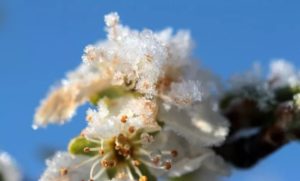 In the midwest, we all know that the weather can change in an instant. In the spring, for example, temperatures can rise to 75 degrees if we are lucky, and drop to below freezing within 24 hours. So it is always a debating game finding out when to start planting for the season. Typically the beginning of May is safe to begin the planting process outdoors. Whether you are growing a vegetable garden or planning on growing perennials, May should be safe.
In the midwest, we all know that the weather can change in an instant. In the spring, for example, temperatures can rise to 75 degrees if we are lucky, and drop to below freezing within 24 hours. So it is always a debating game finding out when to start planting for the season. Typically the beginning of May is safe to begin the planting process outdoors. Whether you are growing a vegetable garden or planning on growing perennials, May should be safe.
In the southern midwest, typically the last frost happens around mid to late April, but sometimes it is safe to wait until the second week in May. If you live in the northern midwest, waiting until mid-May is probably your best bet. If you want to grow or pot succulents, begonias, impatiens, peppers, or tomatoes, frost protection is especially important. These tender plants will be severely affected by frost and will most likely not survive.
Check the Forecast
 There are some plants that may survive the frost. Some of these include pansies, snapdragons, dianthus, alyssum, dusty miller, viola, flowering cabbage, and kale. Typically, these annuals can survive in temperatures as low as 20 degrees. However, it is important to note that these flowers may be a bit ragged after this frost, but the plants should survive the season. Ultimately, check your weather forecast before making any major decisions.
There are some plants that may survive the frost. Some of these include pansies, snapdragons, dianthus, alyssum, dusty miller, viola, flowering cabbage, and kale. Typically, these annuals can survive in temperatures as low as 20 degrees. However, it is important to note that these flowers may be a bit ragged after this frost, but the plants should survive the season. Ultimately, check your weather forecast before making any major decisions.
According to Midwest Living, May is the perfect time to plant any perennials and warm-season annuals. Furthermore, planting summer-blooming corms and tubers such as gladiolus corms, canna rhizomes, tuberous begonias, and other summer bulbs should be planted at this time. You do not want to wait until the weather becomes to warm or else the bulbs will not take off. If you plan on planting or transplanting perennial edibles such as strawberries or rhubarb, the beginning of May has the best temperatures to do so.
Looking Ahead in the Planting Process
To prepare for the summer and fall seasons, May would be the time to divide and transplant most summer- and fall-blooming perennials. Why? Because they’ll have plenty of time to get established by bloom time. However, wait to divide spring bloomers until fall as cooler temperatures are needed for spring bloomers to successfully mature.
Heartwoods Landscaping is here to answer any questions regarding the landscaping and planting process. To learn more about our landscaping and maintenance services, give us a call today at (309) 360-4224.
